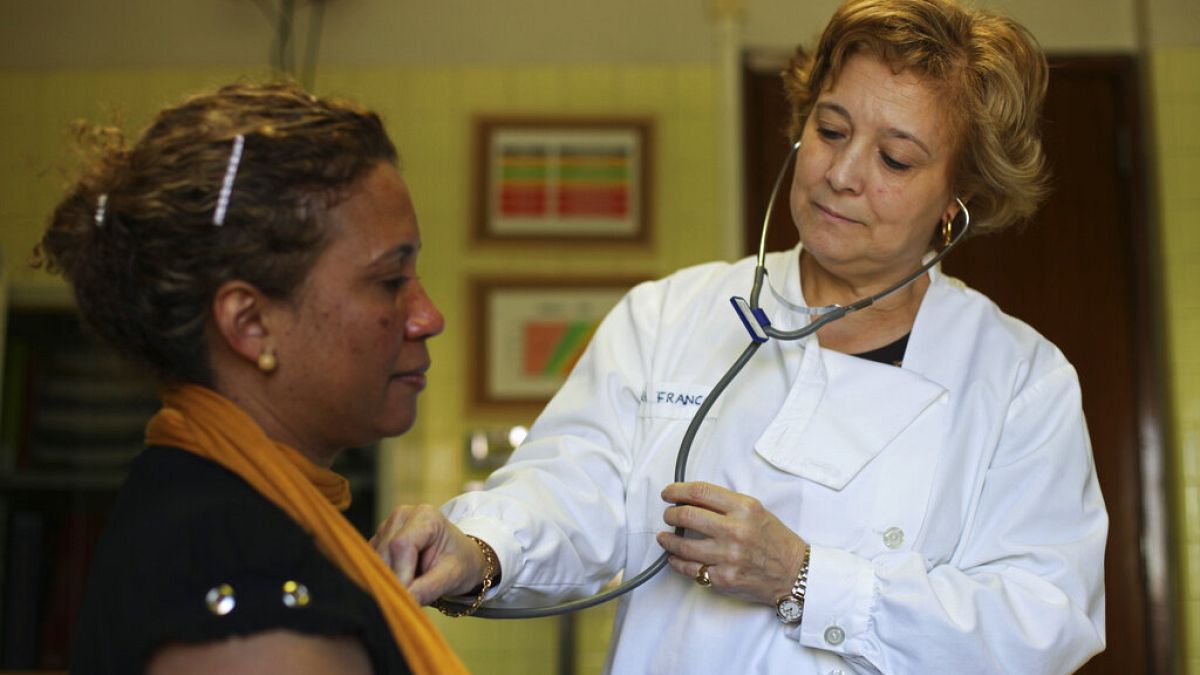The Hungarian Presidency will address gender inequalities in cardiovascular diseases as part of its EU Cardiovascular Health (CVH) Plan, envisioned as a flagship health priority.
The Hungarian government wants to use its EU Council presidency to push for the creation of an EU-wide plan on cardiovascular health, with a particular focus on prevention and tackling inequalities, according to a document seen by Euronews.
The idea is to create an EU plan with common targets that, together with national plans, would improve the current worrying situation of cardiovascular diseases (CVDs) in the bloc.
A quick internet search on heart attack prevention will often show pictures of a man with his hand over his chest, writhing in pain. While this may correspond to male experience of cardiovascular disease it is not as typical for women, who are more likely to experience breathlessness, nausea and vomiting, and back or jaw pain - less often associated with this condition.
This is just the tip of the iceberg of differences between the sexes' experience of cardiovascular disease (CVDs), where gender plays a key role as women suffer more severe outcomes and higher mortality than men, according to the European Society of Cardiology.
CVDs are conditions related to the heart and circulatory system - including stroke, heart failure, hypertension and congenital heart disease.
Although mortality from cardiovascular disease is falling in the EU, CVDs remain the chief cause of mortality, accounting for 1.7 million deaths a year, according to Eurostat.
Oxford Population Health, the health research department from Oxford University, estimates that this high number of deaths represents 1.3 million working years lost and accounted for around €32 billion in lost productivity in 2021.
Overall, cardiovascular disease cost the EU economy €282 billion in the same year, according to the English university.
Considering these figures, and with the aim of preventing premature deaths and future healthcare costs, the Hungarian Presidency intends to focus on early detection of cardiovascular disease and its risk factors.
The Hungarian plan, developed together with the European Society of Cardiology, starts from an assumption that the burden of cardiovascular diseases is not evenly distributed but “is reflective of deep-seated inequalities in the EU spanning geographies, genders and generations”.
The European Institute for Women's Health (EIWH) has warned that a general decline in CVD seen at EU level does not apply where women are concerned. Instead, they say, the number of new cases in women is increasing and, due to their greater longevity, the burden of CVD is gradually shifting to women.
This gender gap is not only due to physical differences that make risk factors manifest differently in women, but also to a lack of awareness among both the general public and healthcare professionals.
The EIWH has warned that women are less likely to understand and recognise their risk factors and symptoms due to a traditionally masculine image of cardiovascular disease, making it more difficult to prevent and manage.
Despite these clear differences in the presentation of CVD, women are still underrepresented in research. An analysis of female participation in cardiovascular clinical trials from 2010 to 2017 in the EU shows that of 86 randomised controlled trials, only 37.4% of the 68,000 participants were women.
It also showed that the lowest participation rates were among women aged 61 to 65 years (26%), although age is a key factor for women, who tend to develop CVD ten years later than men.















